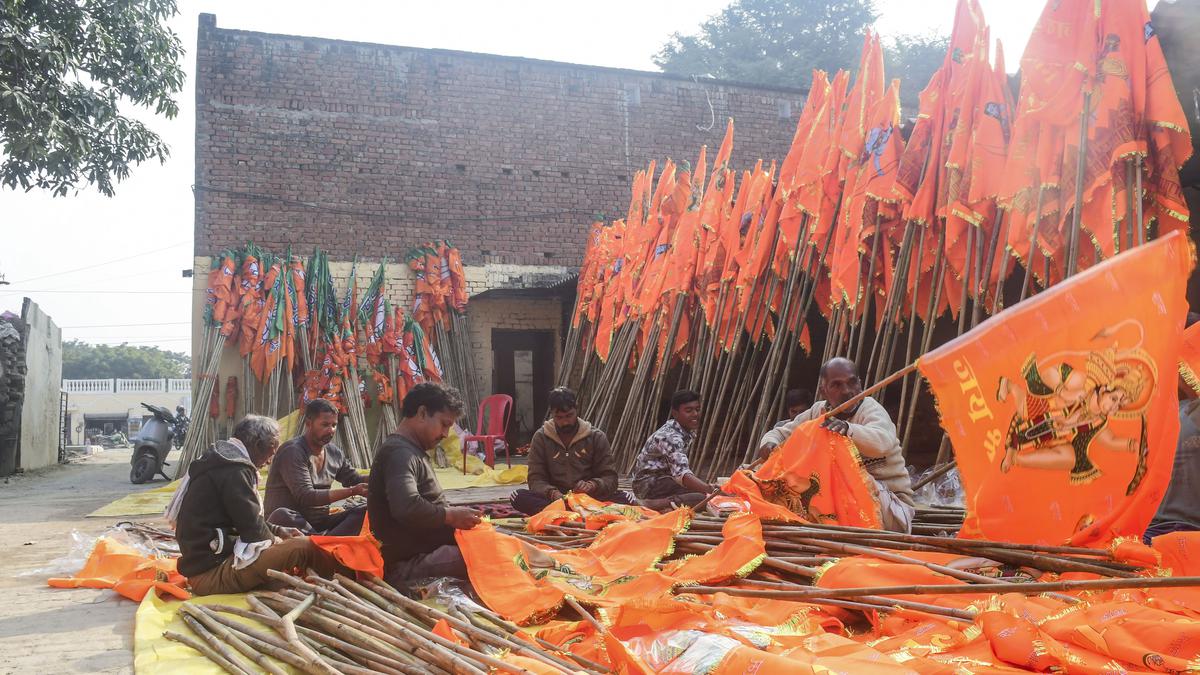
Ram temple complex will be ‘atmanirbhar’ in its own way, statue of ‘Jatayu’ installed: Champat Rai
The Hindu
Ram temple complex in Ayodhya to be 'atmanirbhar' with sewage and water treatment plants, facilities for elderly and specially-abled.
The under-construction Ram temple complex in Ayodhya will be 'atmanirbhar' in its own way with sewage and water treatment plants, and it will also have facilities to ease the movement of the elderly and the specially-abled, officials said on December 26.
Ram temple trust general secretary Champat Rai said this as he shared the landscape plan of the grand complex in a presentation made at the trust's office in Ayodhya.
He also said that 70 per cent of the 70 acres of the upcoming temple complex will be green area.
The complex will be 'atmanirbhar' in its own way as it will have two STPs, one WTP and a dedicated line from power house, he said.
The temple complex will also have a fire brigade post, which will be able to source water from an underground reservoir, he added.
The grand temple will have 392 pillars, a 14 feet-wide 'percota' periphery which will span 732 metre, Rai said, sharing the landscape plan with a group of journalists.
The Ram temple complex will have the lift facility and two ramps at entrance to facilitate elderly, specially-abled visitors, he said.

“Writing, in general, is a very solitary process,” says Yauvanika Chopra, Associate Director at The New India Foundation (NIF), which, earlier this year, announced the 12th edition of its NIF Book Fellowships for research and scholarship about Indian history after Independence. While authors, in general, are built for it, it can still get very lonely, says Chopra, pointing out that the fellowship’s community support is as valuable as the monetary benefits it offers. “There is a solid community of NIF fellows, trustees, language experts, jury members, all of whom are incredibly competent,” she says. “They really help make authors feel supported from manuscript to publication, so you never feel like you’re struggling through isolation.”

Several principals of government and private schools in Delhi on Tuesday said the Directorate of Education (DoE) circular from a day earlier, directing schools to conduct classes in ‘hybrid’ mode, had caused confusion regarding day-to-day operations as they did not know how many students would return to school from Wednesday and how would teachers instruct in two modes — online and in person — at once. The DoE circular on Monday had also stated that the option to “exercise online mode of education, wherever available, shall vest with the students and their guardians”. Several schoolteachers also expressed confusion regarding the DoE order. A government schoolteacher said he was unsure of how to cope with the resumption of physical classes, given that the order directing government offices to ensure that 50% of the employees work from home is still in place. On Monday, the Commission for Air Quality Management in the National Capital Region and Adjoining Areas (CAQM) had, on the orders of the Supreme Court, directed schools in Delhi-NCR to shift classes to the hybrid mode, following which the DoE had issued the circular. The court had urged the Centre’s pollution watchdog to consider restarting physical classes due to many students missing out on the mid-day meals and lacking the necessary means to attend classes online. The CAQM had, on November 20, asked schools in Delhi-NCR to shift to the online mode of teaching.









